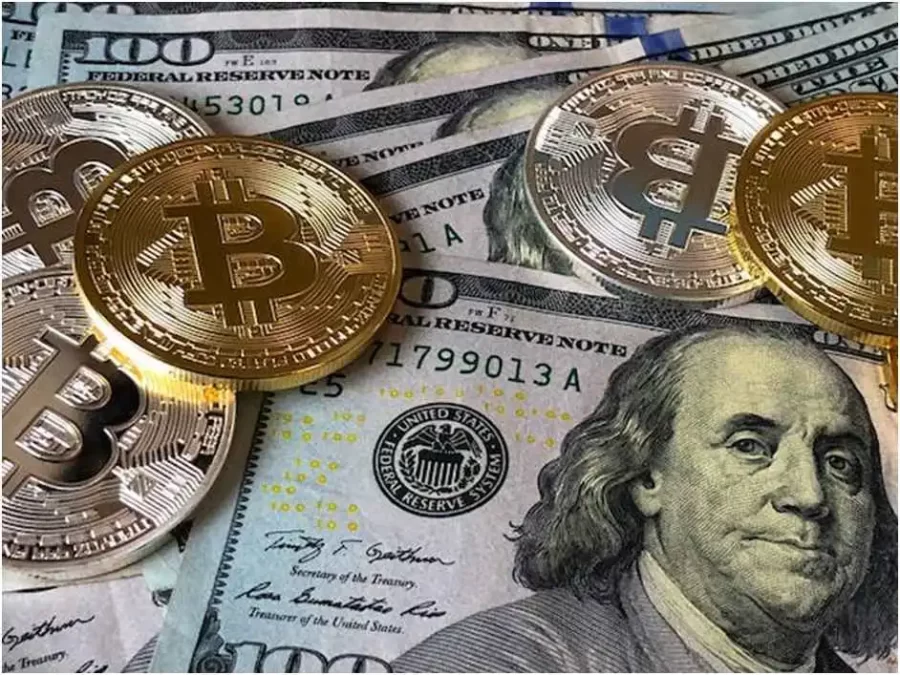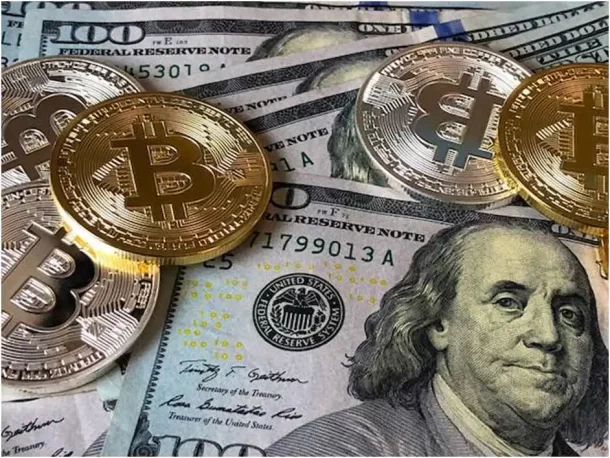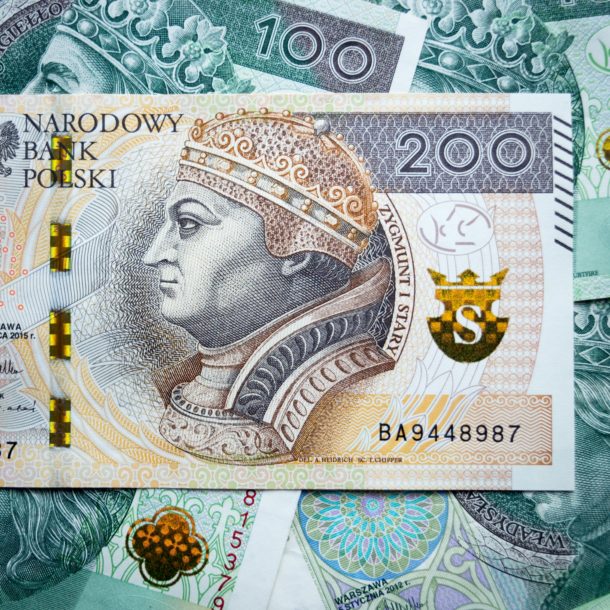Home
Currency Chronicles_ Unveiling the Financial Wonders

Money plays a vital role in the intricate web of our modern society. It’s like a cornerstone tightly woven into how our economy works.
From way back when people used to exchange things directly, like swapping items, to the high-tech world of digital money like cryptocurrencies today, the way we use money has totally shaped how we trade stuff, run businesses, and deal with money matters.
This article is about the super exciting story of how money evolved. We will uncover all the cool stuff about its history, the fancy technology behind it, and how it’s connected to our economy.

The Story of Currency’s Development
Barter System in Ancient Times
Think about how things were when human civilization was just starting. Instead of using money, people would simply trade stuff they had for things they needed. If you had extra wheat, you might trade it for some pottery someone else made.
This trading system helped local economies grow because people exchanged things they had a lot of for something they didn’t have. But there were issues like you had to find someone who wanted what you had and had what you wanted at the same time.
Plus, some things were hard to divide, making trading a bit tricky. And that’s where the idea of using something more sophisticated than just bartering came in.
Standardized Coins: A Revolutionary Leap in Commerce
As human civilization advanced, the need for a consistent and universally accepted unit of value became evident. The introduction of standardized coins in various cultures marked a watershed moment in the history of currency symbols.
By assigning a specific value to each coin, trade transcended geographical and cultural barriers. This transformative development propelled commerce by providing a reliable measure of worth, facilitating cross-border trade, and contributing to economic growth.
The Power of Paper Money
The transition from metallic currency to paper money marked a turning point in financial history. Chinese, Persian and European cultures pioneered the use of paper money. This innovation facilitated long-distance trade and reduced the need for carrying heavy metal coins.
However, adopting paper money also brought challenges, such as inflation and counterfeiting, which governments had to address through effective monetary policies.
Cryptocurrency: The Digital Revolution
The advent of the internet era gave rise to a new concept of currency: cryptocurrency. Bitcoin, introduced in 2009 by an anonymous creator using the pseudonym Satoshi Nakamoto, promised decentralized and secure digital transactions through blockchain technology.
While cryptocurrencies like Bitcoin and Ethereum have gained traction, they also pose regulatory challenges and concerns about their potential use in illegal activities.
The Role of Central Banks
Pillars of Monetary Governance: Central Banks’ Crucial Role
Within the intricate tapestry of a nation’s financial ecosystem, central banks emerge as the guardians of economic stability and currency management.
These institutions are responsible for orchestrating intricate monetary policies that shape a country’s financial landscape trajectory.
Regulating the Lifeblood: Central Banks and Money Supply
At the heart of a central bank’s role lies the regulation of money supply, a delicate dance that requires meticulous calibration. Central banks can influence inflation rates and purchasing power by controlling the amount of money circulating within an economy.
Through methods such as open market operations and reserve requirements, they wield a powerful tool to safeguard the value of a nation’s currency.
Steering the Economic Engine: Central Banks and Interest Rates
The manipulation of interest rates is a central bank’s lever for steering the economic engine. By adjusting these rates, central banks can encourage borrowing or saving, thus impacting consumer spending and investment.
This power is particularly potent during economic flux, enabling central banks to stimulate growth or rein in inflationary pressures.
Foreign Exchange Market: Unraveling Forex Trading
The foreign exchange (forex) market facilitates the exchange of currencies, enabling international trade and investment. Exchange rates fluctuate based on various factors, including interest rates, geopolitical events, and economic indicators.
Forex trading is vital to the global economy, connecting nations and enabling businesses to engage in cross-border transactions.
Innovative Financial Technologies
The rise of financial technology (fintech) has revolutionized how we interact with currency. Digital payment platforms have transformed the landscape, offering secure and convenient alternatives to traditional cash transactions.
Peer-to-peer lending platforms and robo-advisors have democratized access to financial services, empowering individuals to invest and manage their money with greater autonomy.
Historical Hyperinflations: Lessons Learned

Examining historical instances of hyperinflation, such as Weimar Germany, Zimbabwe, and Venezuela, reveals the catastrophic consequences of unchecked money printing and economic instability.
These events underscore the importance of responsible monetary policies and the need to maintain stable currency values to prevent economic collapse.
The Future of Currency: Trends and Speculations
As we look to the future, central bank digital currencies (CBDCs) are emerging as potential game-changers, offering digital versions of traditional currencies backed by government authority.
Furthermore, advancements in AI and biometric technologies could reshape currency management, enhancing security and streamlining financial processes.
Conclusion
Currency’s journey is an enthralling tale that spans centuries, continents, and technological breakthroughs. From the early days of barter to the modern intricacies of cryptocurrency and fintech, the currency has demonstrated an astonishing capacity to adapt and evolve.
By understanding its history and staying informed about ongoing financial innovations, we can better navigate the complex landscape of global economies and financial systems.
Casual
Encouraging Growth and Motivation: Resources for Child Development

Child development is a complex journey marked by critical milestones where each stride forward builds upon the foundation of the previous one. Acknowledging children’s individual needs, pediatric therapy services tailor strategies to foster physical, emotional, and cognitive growth. To support this transformative process, environments that prompt curiosity and engagement, coupled with advanced educational tools, play an instrumental role in shaping young minds. These resources, carefully selected and applied, can significantly amplify a child’s developmental trajectory. Keep reading to learn about the effective ways these tools and techniques can aid in advancing childhood milestones.
Pediatric Therapy Services: Enhancing Developmental Milestones
Pediatric therapy services support children as they reach and surpass developmental milestones. These services, often provided by skilled therapists, address various growth challenges, ensuring each child has the best possible start in life. From speech and occupational therapy to physical and behavioral interventions, these professionals tailor their approach to meet the unique needs of every young patient.
Therapists work relentlessly to motivate children, fostering an environment where milestones are not merely achieved but celebrated. Through personalized, one-on-one sessions, children gain the confidence and skills necessary to navigate their developmental journeys more easily. The trust between therapist and child is a solid foundation for consistent progress and paves the path for lifelong learning and adaptation.
Resource provision is a key component of pediatric therapy, equipping parents with the tools to continue therapy practices at home. Effective communication between therapists and families ensures a cohesive strategy that envelops the child’s daily routine, enhancing the therapy’s impact. It also allows parents to identify subtle progress, reinforcing their pivotal role in the child’s developmental success.
If you’re looking for pediatric therapy in your area, a simple Google search like “pediatric therapy Arizona” will help you find local providers and services tailored to your child’s needs, ensuring they receive the specialized care necessary for their development.
Optimizing Play Spaces: Creating Environments for Learning and Exploration
Optimized play spaces are vital platforms where children engage with their world, build skills, and unleash their creativity. Designers of such areas pay astute attention to elements that promote safe exploration and intellectual stimulation. A thoughtfully arranged play environment serves as a place of entertainment and a crucible for burgeoning development.
Professionals incorporate a variety of tactile and visual stimuli within play areas to cater to diverse developmental needs and interests. Stimulating sensory experiences is central to cognitive and motor skill refinement among younger populations. The intentional selection of colors, textures, and interactive features sparks curiosity and encourages physical activity, which is fundamental to healthy growth.
Accessibility remains paramount in creating play spaces, ensuring they cater to children across all abilities. Including adaptive resources within these environments demonstrates a commitment to inclusive development, allowing every child to participate and benefit from the joy and learning play offers. Such inclusiveness fosters a sense of community and belonging, which is essential for emotional and social development.
Affording children autonomy in their play advances self-directed learning and problem-solving capabilities. When children feel empowered to make choices within their play, they better understand their preferences and abilities, setting the stage for confidence and self-awareness — qualities that are instrumental as children grow and transition through life’s stages.
Additionally, incorporating elements like fake plants or outdoor plants from retailers like Nearly Natural outdoor plants into play spaces can enhance children’s sensory and aesthetic experience.
Interactive Learning Tools: Technology and Resources for Cognitive Development
Interactive learning tools harness technology’s power to solidify children’s cognitive development. These digital resources provide an array of engaging, educational content that aligns with critical thinking and problem-solving skills.
Software and applications designed for children’s learning capitalize on the allure of multimedia to capture young minds. Effective education solutions provide children with stimulating challenges that are age-appropriate and aligned with developmental targets.
The discerning use of educational technology in classrooms and homes can reinforce concepts and skills taught through traditional methods. It creates a harmonious blend of instruction and interactive play, thereby cementing a child’s understanding and retention of information.
Providers of such educational platforms are ever vigilant, updating content to reflect new educational strategies and the latest academic research. Thus, children equipped with these technological tools remain at the vanguard of current learning methodologies, all while engrossed in fun and dynamic ways.
Overall, caregivers and educators can provide comprehensive support for children’s developmental journeys by integrating pediatric therapy services, optimized play spaces, and interactive learning tools. These resources nurture their physical, emotional, and cognitive growth and cultivate a lifelong love for learning and exploration.
Business
Conquer the Digital Toolbox: A Home Improvement Pro’s Guide to Online Marketing Success

In the not-so-distant past, home improvement businesses thrived on word-of-mouth referrals and the occasional ad in the local newspaper. But times have changed. Today’s homeowners are tech-savvy, turning to their smartphones and laptops to research contractors, compare prices, and read online reviews before making a decision. This shift towards digital means that even the smallest mom-and-pop operation needs a strong online presence to stay competitive.
The good news is, the internet has leveled the playing field. It’s no longer about who has the biggest advertising budget; it’s about who has the smartest digital marketing strategy. By understanding the fundamentals of search engine optimization (SEO) and implementing effective online marketing tactics, even small businesses can punch above their weight and attract a steady stream of qualified leads.
Building Your Online Basecamp
Utilizing home improvement SEO strategies might sound like a complex digital puzzle, but it boils down to a simple goal: making sure your business pops up when potential customers search for the services you offer. Imagine a homeowner in your area with a leaky pipe. What are they most likely to do? Grab their smartphone and search for “plumber near me” or “emergency plumbing services”. If your website isn’t optimized for these types of searches, you’re essentially invisible to those customers who are actively seeking your help.
This is why SEO is so crucial for home improvement businesses. Homeowners facing a plumbing issue, a damaged roof, or a pest infestation don’t have the luxury of browsing through endless pages of search results. They need immediate solutions, and your website needs to be at the top of those results to capture their attention.
Regardless of your specific trade, there are some foundational SEO steps that every home improvement business should take. Start by claiming and optimizing your Google Business Profile (formerly Google My Business). This free listing allows you to manage how your business appears in Google searches and Maps, ensuring potential customers have accurate contact information and hours of operation.
Consistency is key: make sure your business name, address, and phone number are consistent across all online platforms, from your website to your social media profiles. This builds credibility and makes it easier for search engines to associate your business with relevant search terms.
The HVAC Pro’s Digital Tune-Up
Ready to crank up your HVAC business’s online presence? The key is to start with a focused and actionable plan. Forming a helpful HVAC digital marketing checklist to do right now can be your first step towards success, guiding you through the essential stages to boost your visibility and attract more customers.
Begin by targeting the right keywords. Generic terms like “furnace repair” or “air conditioning” are highly competitive. Instead, get specific to your service area and offerings. Think “emergency furnace repair in [your city]” or “AC tune-up specials in [your neighborhood].” By tailoring your keywords to the searches potential customers in your area are actually conducting, you increase the chances of your website appearing at the top of relevant results.
Content marketing plays a crucial role in establishing your expertise and building trust. Think of your website’s blog as an opportunity to answer common questions before customers even pick up the phone. Craft informative articles or videos on topics like “How to Choose the Right Air Filter for Your Home” or “5 Signs Your AC Needs Repair.” By offering valuable advice, you not only attract potential customers through search engines but also position yourself as a knowledgeable resource.
Don’t underestimate the power of social media for HVAC businesses. Platforms like YouTube and Facebook can be powerful tools for showcasing your expertise and connecting with your community. Consider creating short “how-to” videos on simple maintenance tasks, sharing before-and-after photos of your projects, or even offering virtual consultations to answer questions and address concerns. By being active and engaged on social media, you can build brand awareness and trust, which ultimately translates into more leads and higher conversion rates.
Roofing Marketing: Beyond the ‘After’ Photo
While impressive before-and-after photos of completed projects remain actual in roofing marketing ideas, the digital age demands a more nuanced approach. While those shiny new roofs might capture initial attention, they don’t tell the whole story. To truly connect with potential clients and differentiate your company from the competition, you need to delve deeper.
Sharing compelling case studies that showcase your expertise and problem-solving skills can be incredibly impactful. Highlighting unique challenges you’ve encountered, such as intricate roof designs or unusual materials, demonstrates your capabilities and reassures potential clients that you can handle their specific needs. Client testimonials add another layer of authenticity to your marketing efforts. Allowing satisfied customers to share their positive experiences in their own words builds trust and credibility.
Partnering with local real estate agents can be a mutually beneficial strategy. They often encounter homeowners who need roof repairs or replacements, and your expertise can be a valuable asset to their clients. By offering referral incentives or even co-hosting informational webinars, you can forge strong relationships within your community and gain access to a steady stream of qualified leads.
Finally, don’t underestimate the power of local SEO. Optimizing your website for keywords like “roofers near me” or “roofing companies in [your city]” ensures that your business appears prominently in search results when homeowners in your area are actively seeking roofing services.
The Pest Control Playbook
Pest control isn’t a year-round concern for most homeowners, which means learning about specifics of pest control SEO is required for successful marketing. Searches for “pest control” services often spike during specific seasons. Think about it: you’re more likely to worry about tick prevention in the spring, mosquito control in the summer, and mice infestations as the weather turns cold. Understanding these seasonal trends is crucial for tailoring your content to address the most pressing concerns of potential customers at any given time.
For many people, dealing with a pest infestation is an emotional experience. It can trigger feelings of anxiety, disgust, and even fear. This is where content marketing plays a crucial role in not just attracting clients, but reassuring them. Instead of solely focusing on advertising your extermination services, offer helpful information that empowers homeowners to take preventive measures. Blog posts on identifying common pests, tips for keeping rodents out of your home, or natural remedies for insect control show you understand their concerns and are invested in their well-being.
In the pest control industry, online reviews are worth their weight in gold. When dealing with an infestation, people want fast, effective solutions. Positive reviews on platforms like Google and Yelp build trust quickly, assuring potential customers that your company has a proven track record of success.
Measuring Your Wins
It’s tempting to measure your digital marketing success by the number of likes, shares, or followers you accumulate on social media. While these “vanity metrics” might feel good, they don’t necessarily translate into real business growth. For home improvement companies, the true measure of success is the number of qualified leads and booked jobs generated by your online efforts.
Don’t get lost in a sea of clicks and impressions. Instead, focus on tracking the metrics that truly matter to your bottom line. How many visitors to your website actually fill out your contact form or call to schedule an estimate? How many of those leads turn into paying customers? By carefully tracking these conversions, you can gain valuable insights into which marketing channels are most effective, which types of content resonate with your audience, and ultimately, what’s driving your business forward.
While the world of website analytics can be intimidating, there are user-friendly tools available to help you track your progress without getting bogged down in technical details. Google Analytics, for example, provides a wealth of information about your website traffic, including where visitors are coming from, which pages they’re viewing, and how long they’re staying on your site. By setting up conversion tracking, you can even see which marketing efforts are directly resulting in leads and sales. Other platforms offer simplified dashboards and reports tailored to the needs of small businesses, making it easier than ever to harness the power of data and make informed decisions about your marketing strategy.
When to Get Expert Help
While the initial stages of home improvement SEO can be handled in-house, there comes a point when seeking professional guidance becomes a wise investment. If you’ve diligently implemented the basic steps of SEO, like optimizing your website and Google Business Profile, but aren’t seeing the desired results, don’t despair. It could simply mean your business needs a more comprehensive and tailored approach. Similarly, if the thought of managing a blog, crafting social media posts, or analyzing complex website data makes you want to pull your hair out, it’s okay to admit you need help.
When searching for a marketing partner, it’s crucial to find an agency with a deep understanding of the unique challenges and opportunities faced by home improvement businesses. A generic marketing agency might have experience with e-commerce or retail, but they won’t grasp the nuances of the construction industry. Look for a company that specializes in home services marketing. They’ll understand the seasonal fluctuations in demand, the importance of local SEO, and the specific types of content that resonate with homeowners.
Conclusion: Building Your Digital Empire
Building a powerful online presence for your home improvement business is a journey, not a destination. SEO isn’t a magic wand you wave once to achieve instant success. It’s an ongoing process that requires patience, consistent effort, and a willingness to adapt to the ever-changing digital landscape. But the rewards are well worth the investment. By staying committed to your SEO strategy, you can steadily climb the search engine rankings, attract a consistent flow of qualified leads, and establish your business as a trusted authority in your local market. Don’t be afraid to seek out additional resources and guidance as you navigate this digital journey. There are several industry-specific blogs and podcasts that offer valuable insights and advice on how to optimize your online presence. Resources like Comrade Digital Marketing blog can help you stay up-to-date on the latest trends, learn from the successes (and failures) of others, and ultimately build a thriving online empire that sets your home improvement business apart from the competition.
Home
How to Get Internet for Your New Apartment

We know that moving into a new apartment is an exciting experience, but it can be stressful at the same time. The new apartment comes with a lot of amenities but also with some challenges as well. And one of the essential things you will need to do is set up your internet connection. Because we rely on a good internet connection for work, entertainment, and even communication.
However, some of the internet providers make it easy for you to transfer your services. But finding a good internet provider can be tricky if your current ISP does not serve your new area.
If you are looking for an internet provider that offers blazing-fast internet connection, then we suggest you choose Windstream. It offers top-notch internet services in several states of America. You can visit its website and enter your area zip code to check the availability of its services in your area.
Also, give this blog a good read as we have listed some tips that can help you find the right provider for your new home. So, let’s get started!
How to Set Up Internet Connection at Your New Apartment
When you rent an apartment, the landlord might provide internet services, but you do not have to stress out if you are not provided with one. Below, we have listed some of the tips that can help you set up internet service at your new place as soon as you move. But you need to check with your landlord whether you can add a new line and install your Wi-Fi setup. As the installation includes drilling and mounting new boxes on the exterior of the building, which might not be permitted. Otherwise, you will be penalized for doing so.
Check with Your Internet Service Provider
Before moving into a new house, you should check the coverage map of your internet service provider. If it does, then congratulations, you do not have to look for any other option, just let your provider know about it. For instance, if you are a Windstream and moving to one of the 18 States, where it offers its internet services, then you are lucky because you will get to use a quality fiber optic connection. Simply let the provider know about it, so the tech team can schedule an appointment and easily install your internet connection.
Choose a Reliable Provider
If your existing provider does not offer services in your new area, the first thing you will need to do is to research the available internet providers. You can do this online or by asking neighbors for recommendations. You can compare the plans and pricing of the providers that fit your needs and budget. Do not forget to read the reviews to know about the quality of the services offered by your chosen provider.
Consider Your Need for Speed
When choosing an internet service provider, you should first consider your internet usage. Ask yourself what activities require an internet connection. The mere reason is that knowing your internet activities can help ensure you have an internet package that is sufficient for your needs. Also, consider the number of devices that will access[NM4] your Wi-Fi connection and whether you will use smart devices or not.
Once you have determined your internet needs, now is the time to calculate the internet speed you require to ensure a seamless online experience. For instance, if you love streaming and have a Hulu or Netflix subscription, then estimate the upload speed required for a smooth streaming experience. If you live solo, 100Mbps will probably be sufficient for you, but you might have to subscribe to a 200-500Mbps plan if you have a large family. Once you have an idea about the internet speed you need, you should discuss it with your ISP. This way, you will be able to choose the perfect internet package.
Determine What Equipment You Will Need
Once you have chosen a provider, determine what equipment you need. For instance, you need a modem and router to use the internet services. The modem connects to the internet, and the router distributes the connection to your devices. If you already have both the equipment, then do let the provider know, otherwise, they will charge you extra for it. But keep in mind that you should have the latest router because your old router might not be able to keep up with today’s internet speeds.
Set Up the Equipment
Once[NM6] you have all the necessary equipment, you must decide whether you want to opt for professional or DIY installation.
Professional installation is an easier option and guarantees that your system will be set up correctly. However, it can be pricey, so you must check your budget. But if you choose DIY installation, then you are responsible for figuring out all the technical details and ensuring that you have installed it correctly. Whatever method you choose, ensure your router is in a central location in your apartment. As a result, you will get the best coverage around the house. So, look for the optimal place to set up the modem and router. Also, ensure it is away free from obstructions and away from the TV, refrigerator, or microwave.
Connect All Your Devices
Once you have installed your setup, check your internet speed using a speed test website. This mandatory step helps the user understand how fast the internet connection is and whether you are getting the speed you are paying for. Once you are done, connect your devices and test your internet connection by browsing the websites and scrolling social media. If you encounter any issues, try troubleshooting them or contact your internet service provider.
Final Thoughts
Moving to a new apartment is a hassle, and the first thing you might need is a robust internet connection. Because having a fast internet connection is mandatory and an essential aspect of modern life. We do understand that setting up an internet connection in your new apartment may seem daunting. But we hope after reading this blog, you will use the tips listed above and easily set up your internet connection.
-

 Guides4 years ago
Guides4 years ago6 Proven Ways to Get more Instagram Likes on your Business Account
-

 Mainstream9 years ago
Mainstream9 years agoBioWare: Mass Effect 4 to Benefit From Dropping Last-Gen, Will Not Share Template With Dragon Age: Inquisition
-

 Casual8 months ago
Casual8 months ago8 Ways to Fix Over-Extrusion and Under-Extrusion in 3D Printing
-

 Guides5 months ago
Guides5 months agoExplore 15 Most Popular Poki Games
-

 Guides1 year ago
Guides1 year agoGan Rubik’s Cube vs. Traditional Rubik’s Cube: Key Differences and Advantages
-

 Uncategorized3 years ago
Uncategorized3 years agoTips To Compose a Technical Essay
-

 iOS Games1 year ago
iOS Games1 year agoThe Benefits of Mobile Apps for Gaming: How They Enhance the Gaming Experience
-

 Mainstream11 years ago
Mainstream11 years agoGuild Wars 2: The eSports Dream and the sPvP Tragedy
